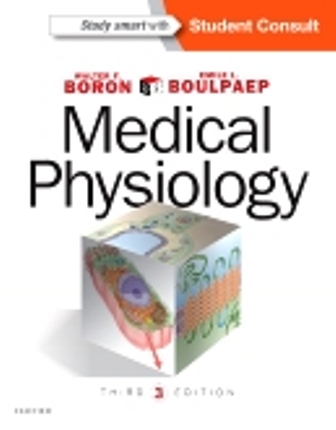Test Bank for Medical Physiology, 3rd Edition, Walter Boron, Emile Boulpaep
$35.00 Original price was: $35.00.$26.50Current price is: $26.50.
Test Bank for Medical Physiology, 3rd Edition, Walter Boron, Emile Boulpaep,
Instant download Test Bank for Medical Physiology, 3rd Edition, Walter Boron, Emile Boulpaep pdf docx epub after payment.

Product details:
- ISBN-10 : 1455743771
- ISBN-13 : 978-1455743773
- Author: Walter F. Boron; Emile L. Boulpaep
For a comprehensive understanding of human physiology ― from molecules to systems ―turn to the latest edition of Medical Physiology. This updated textbook is known for its unparalleled depth of information, equipping students with a solid foundation for a future in medicine and healthcare, and providing clinical and research professionals with a reliable go-to reference. Complex concepts are presented in a clear, concise, and logically organized format to further facilitate understanding and retention.
Table of Contents
I Introduction
Chapter 1 Foundations of Physiology
II Physiology of Cells and Molecules
Chapter 2 Functional Organization of the Cell
Chapter 3 Signal Transduction
Chapter 4 Regulation of Gene Expression
Chapter 5 Transport of Solutes and Water
Chapter 6 Electrophysiology of the Cell Membrane
Chapter 7 Electrical Excitability and Action Potentials
Chapter 8 Synaptic Transmission and the Neuromuscular Junction
Chapter 9 Cellular Physiology of Skeletal, Cardiac, and Smooth Muscle
III The Nervous System
Chapter 10 Organization of the Nervous System
Chapter 11 The Neuronal Microenvironment
Chapter 12 Physiology of Neurons
Chapter 13 Synaptic Transmission in the Nervous System
Chapter 14 The Autonomic Nervous System
Chapter 15 Sensory Transduction
Chapter 16 Circuits of the Central Nervous System
IV The Cardiovascular System
Chapter 17 Organization of the Cardiovascular System
Chapter 18 Blood
Chapter 19 Arteries and Veins
Chapter 20 The Microcirculation
Chapter 21 Cardiac Electrophysiology and the Electrocardiogram
Chapter 22 The Heart As a Pump
Chapter 23 Regulation of Arterial Pressure and Cardiac Output
Chapter 24 Special Circulations
Chapter 25 Integrated Control of the Cardiovascular System
V The Respiratory System
Chapter 26 Organization of the Respiratory System
Chapter 27 Mechanics of Ventilation
Chapter 28 Acid-Base Physiology
Chapter 29 Transport of Oxygen and Carbon Dioxide In the Blood
Chapter 30 Gas Exchange in the Lung
Chapter 31 Ventilation and Perfusion of the Lungs
Chapter 32 Control of Ventilation
VI The Urinary System
Chapter 33 Organization of the Urinary System
Chapter 34 Glomerular Filtration and Renal Blood Flow
Chapter 35 Transport of Sodium and Chloride
Chapter 36 Transport of Urea, Glucose, Phosphate, Calcium, Magnesium, and Organic Solutes
Chapter 37 Transport of Potassium
Chapter 38 Urine Concentration and Dilution
Chapter 39 Transport of Acids and Bases
Chapter 40 Integration of Salt and Water Balance
VII The Gastrointestinal System
Chapter 41 Organization of the Gastrointestinal System
Chapter 42 Gastric Function
Chapter 43 Pancreatic and Salivary Glands
Chapter 44 Intestinal Fluid and Electrolyte Movement
Chapter 45 Nutrient Digestion and Absorption
Chapter 46 Hepatobiliary Function
VIII The Endocrine System
Chapter 47 Organization of Endocrine Control
Chapter 48 Endocrine Regulation of Growth and Body Mass
Chapter 49 The Thyroid Gland
Chapter 50 The Adrenal Gland
Chapter 51 The Endocrine Pancreas
Chapter 52 The Parathyroid Glands and Vitamin D
IX The Reproductive System
Chapter 53 Sexual Differentiation
Chapter 54 The Male Reproductive System
Chapter 55 The Female Reproductive System
Chapter 56 Fertilization, Pregnancy, and Lactation
Chapter 57 Fetal and Neonatal Physiology
X Physiology of Cells and Molecules
Chapter 58 Metabolism
Chapter 59 Regulation of Body Temperature
Chapter 60 Exercise Physiology and Sports Science
Chapter 61 Environmental Physiology
Chapter 62 The Physiology of Aging
People also search:
what to do with a medical physiology degree
|
medical physiology vs biomedical science
|
medicine and physiology difference
who is a medical physiologist
what does a medical physiologist do
Related products
Test Bank
Test Bank for Clinical Immunology and Serology A Laboratory Perspective, 3rd Edition: Stevens











